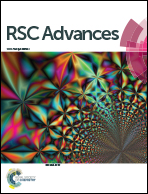On-chip direct freezing and thawing of mammalian cells†
Abstract
Here we present a simple protocol for directly freezing and thawing mammalian cells on a PDMS–glass chip, which enables cell storage at −80 °C on a chip for several days to several months. Two different sizes of straight channels were used (channel I: 4 cm length, 2 mm width, 100 μm height; and channel II: 1 cm length, 900 μm width, 60 μm height). The cell suspension (cell pellet resuspended in freezing medium, which was composed of dimethylsulfoxide (DMSO), fetal bovine serum (FBS) and culture medium) was injected into the microchannel, and the chip was packed and put into the centrifuge tube filled with isopropyl alcohol. The centrifuge tubes were maintained at −80 °C in a cryogenic refrigerator until further use. We demonstrated that HUVECs, 3T3, SKBR3, and HepG2 cells were successfully thawed and grew in the microchannel after 10-days to 1-year cryopreservation by using this protocol.


 Please wait while we load your content...
Please wait while we load your content...